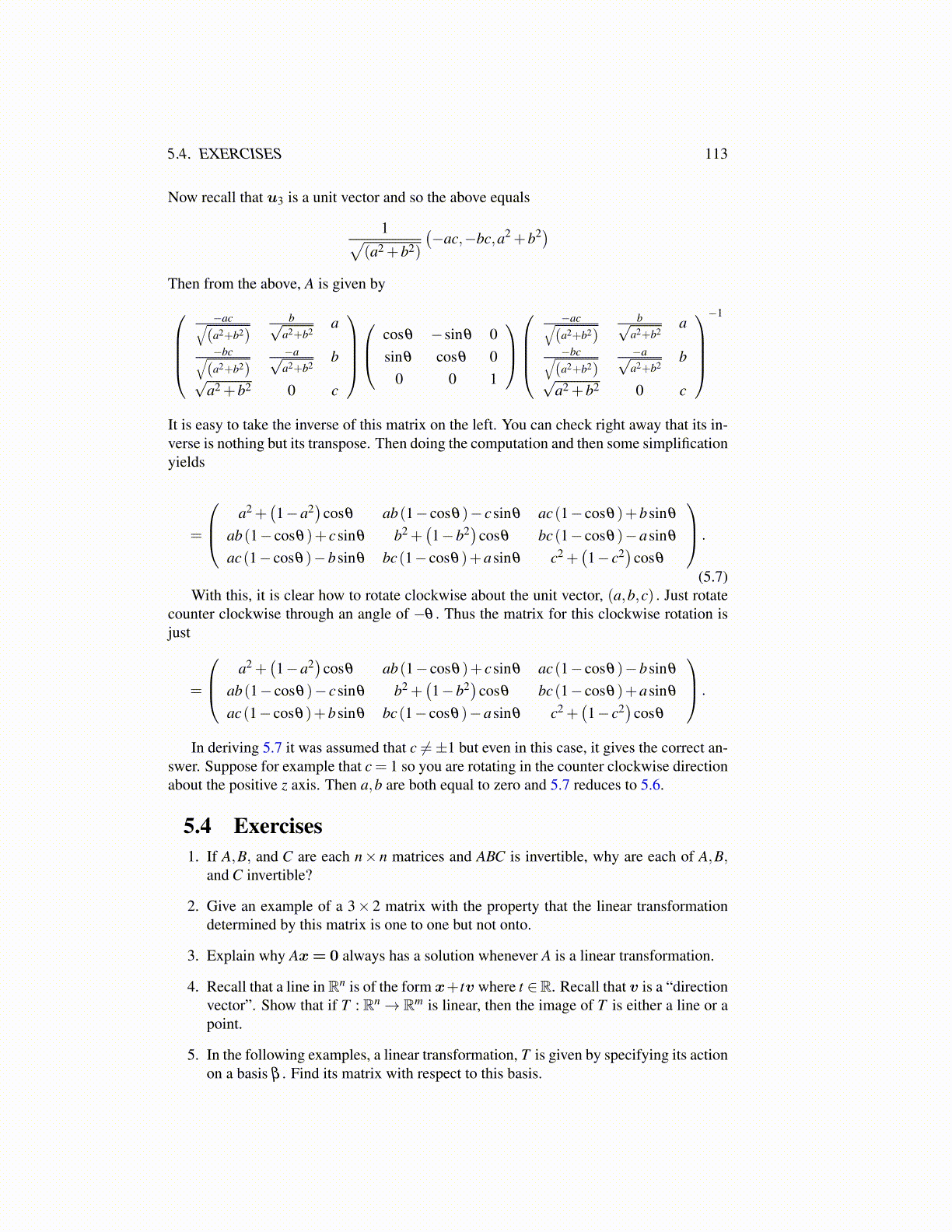
5.4. EXERCISES 113
Now recall that u3 is a unit vector and so the above equals
1√(a2 +b2)
(−ac,−bc,a2 +b2)
Then from the above, A is given by−ac√(a2+b2)
b√a2+b2
a
−bc√(a2+b2)
−a√a2+b2
b√
a2 +b2 0 c
cosθ −sinθ 0
sinθ cosθ 00 0 1
−ac√(a2+b2)
b√a2+b2
a
−bc√(a2+b2)
−a√a2+b2
b√
a2 +b2 0 c
−1
It is easy to take the inverse of this matrix on the left. You can check right away that its in-verse is nothing but its transpose. Then doing the computation and then some simplificationyields
=
a2 +(1−a2
)cosθ ab(1− cosθ)− csinθ ac(1− cosθ)+bsinθ
ab(1− cosθ)+ csinθ b2 +(1−b2
)cosθ bc(1− cosθ)−asinθ
ac(1− cosθ)−bsinθ bc(1− cosθ)+asinθ c2 +(1− c2
)cosθ
.
(5.7)With this, it is clear how to rotate clockwise about the unit vector, (a,b,c) . Just rotate
counter clockwise through an angle of −θ . Thus the matrix for this clockwise rotation isjust
=
a2 +(1−a2
)cosθ ab(1− cosθ)+ csinθ ac(1− cosθ)−bsinθ
ab(1− cosθ)− csinθ b2 +(1−b2
)cosθ bc(1− cosθ)+asinθ
ac(1− cosθ)+bsinθ bc(1− cosθ)−asinθ c2 +(1− c2
)cosθ
.
In deriving 5.7 it was assumed that c ̸=±1 but even in this case, it gives the correct an-swer. Suppose for example that c = 1 so you are rotating in the counter clockwise directionabout the positive z axis. Then a,b are both equal to zero and 5.7 reduces to 5.6.
5.4 Exercises1. If A,B, and C are each n× n matrices and ABC is invertible, why are each of A,B,
and C invertible?
2. Give an example of a 3× 2 matrix with the property that the linear transformationdetermined by this matrix is one to one but not onto.
3. Explain why Ax= 0 always has a solution whenever A is a linear transformation.
4. Recall that a line inRn is of the form x+tv where t ∈R. Recall that v is a “directionvector”. Show that if T : Rn→ Rm is linear, then the image of T is either a line or apoint.
5. In the following examples, a linear transformation, T is given by specifying its actionon a basis β . Find its matrix with respect to this basis.